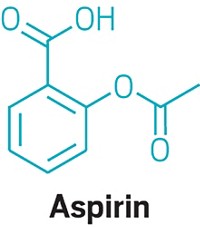Advertisement
Grab your lab coat. Let's get started
Welcome!
Welcome!
Create an account below to get 6 C&EN articles per month, receive newsletters and more - all free.
It seems this is your first time logging in online. Please enter the following information to continue.
As an ACS member you automatically get access to this site. All we need is few more details to create your reading experience.
Not you? Sign in with a different account.
Not you? Sign in with a different account.
ERROR 1
ERROR 1
ERROR 2
ERROR 2
ERROR 2
ERROR 2
ERROR 2
Password and Confirm password must match.
If you have an ACS member number, please enter it here so we can link this account to your membership. (optional)
ERROR 2
ACS values your privacy. By submitting your information, you are gaining access to C&EN and subscribing to our weekly newsletter. We use the information you provide to make your reading experience better, and we will never sell your data to third party members.
Biological Chemistry
Depression Biomarker Identified
March 24, 2008
| A version of this story appeared in
Volume 86, Issue 12
Imagine a blood test that could diagnose depression and also indicate whether a particular antidepressant therapy is working. That could be the eventual outcome of a recent study by Mark M. Rasenick of the University of Illinois, Chicago, and colleagues (J. Neurosci. 2008, 28, 3042). The researchers studied the location of a protein called Gsα in postmortem samples of human brain cells. In depressed people, the team discovered, the protein accumulates within localized, cholesterol-rich "lipid raft" sections of cell membranes. This sequestration dampens the intracellular action of certain neurotransmitters and appears to be associated with depression, Rasenick says. His team and others have previously shown in rats and cultured brain cells that antidepressants move Gsα from lipid rafts to other areas in the membrane where the protein can more effectively pave the way for neurotransmitter action. Some evidence indicates Gsα behaves the same in cells outside the brain, Rasenick notes. If that behavior is confirmed, a simple blood test could diagnose and evaluate the treatment of depression.





Join the conversation
Contact the reporter
Submit a Letter to the Editor for publication
Engage with us on Twitter